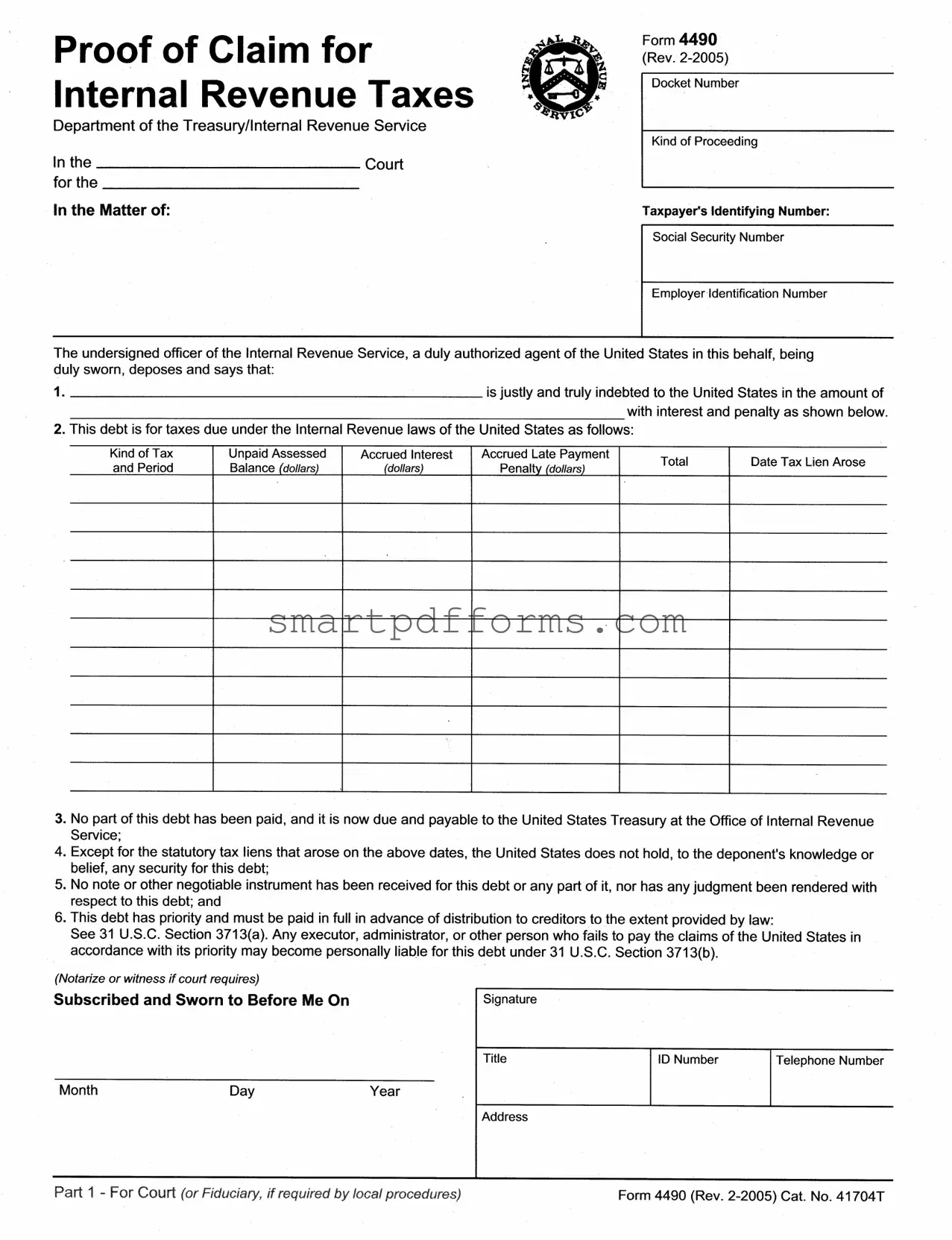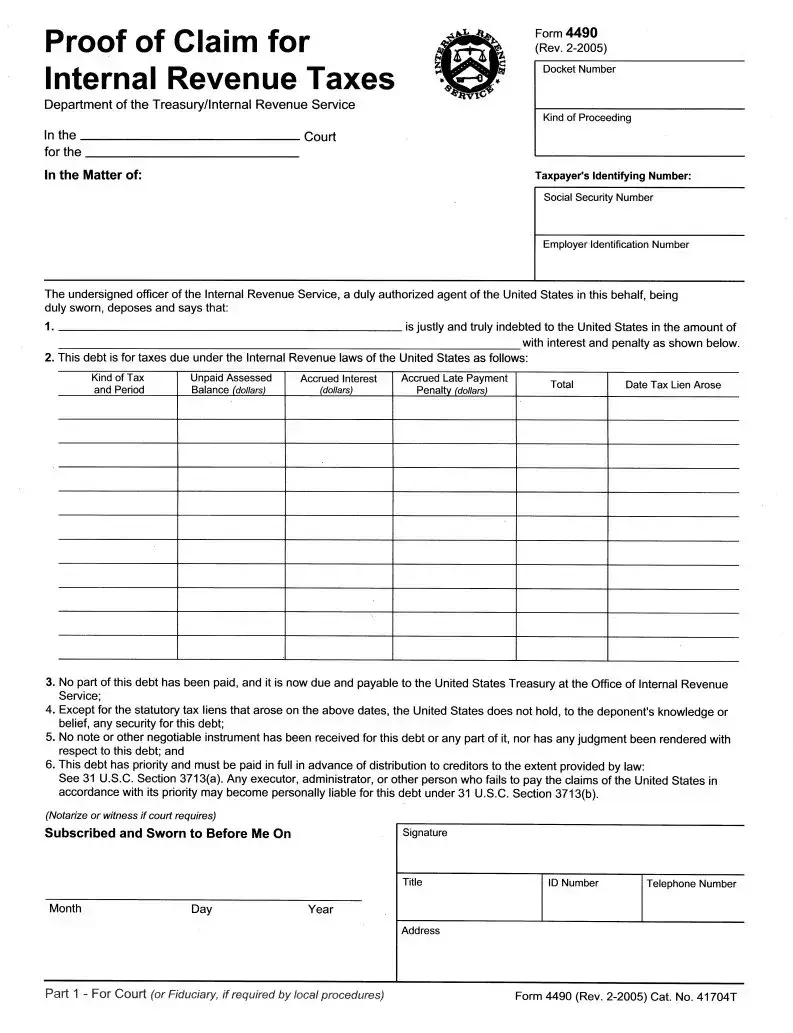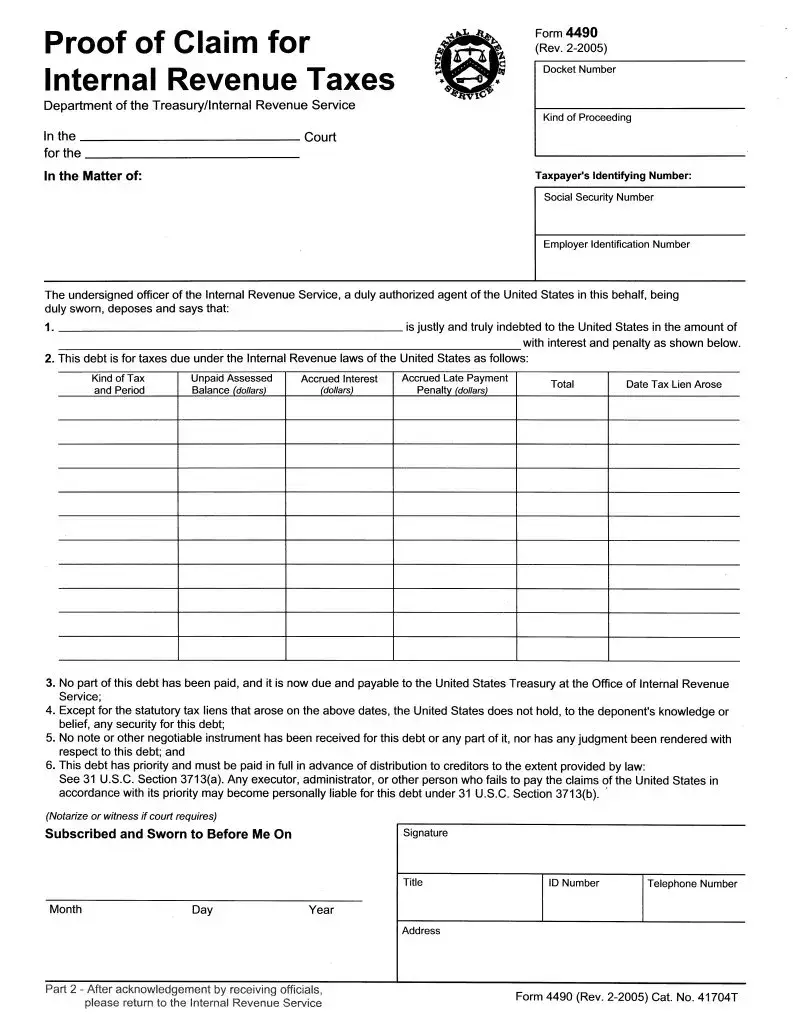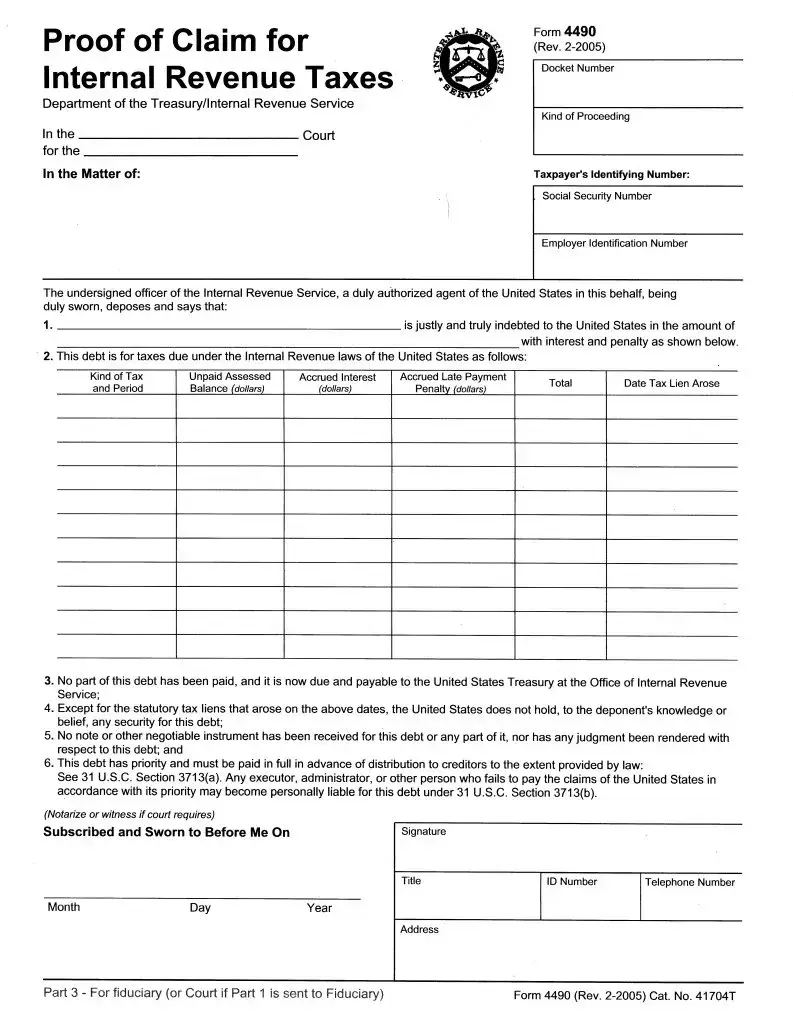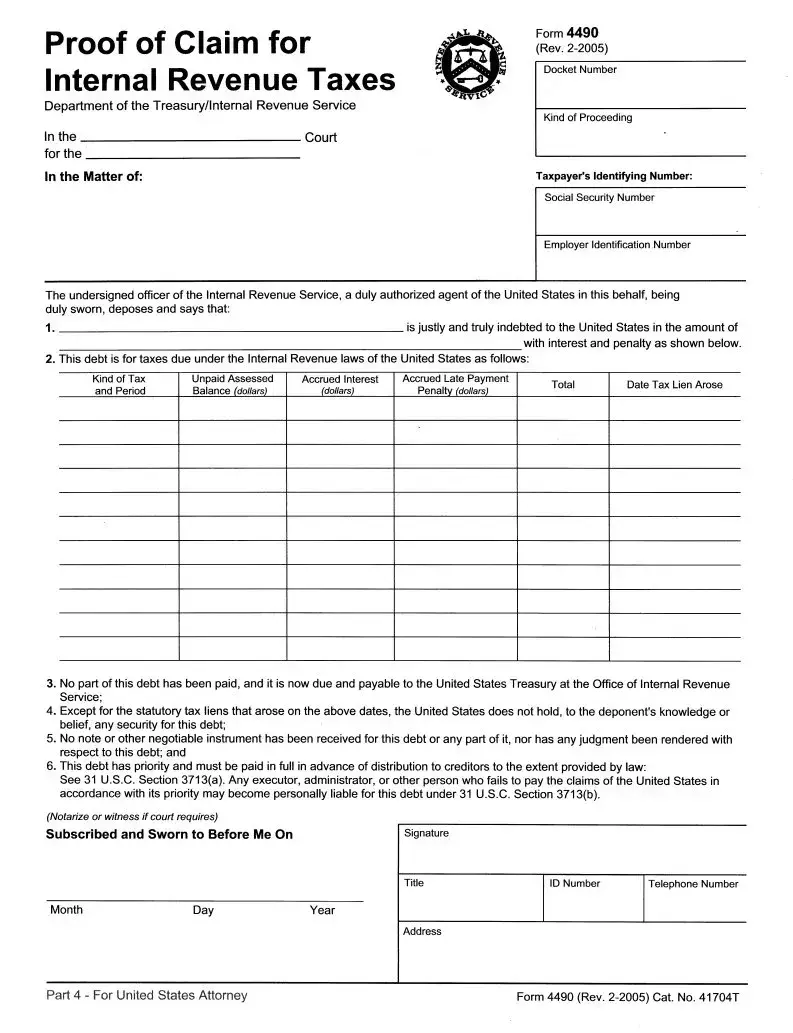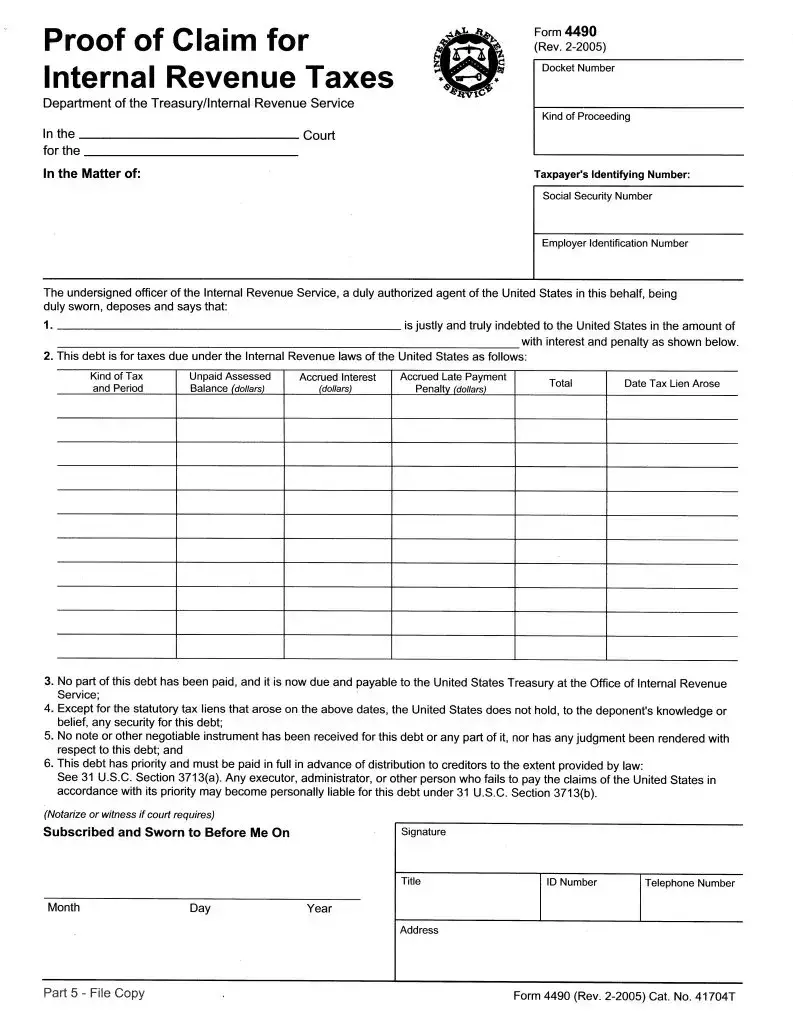In the realm of financial obligations to the United States, especially in matters concerning internal revenue taxes, the Form 4490 stands as a crucial document issued by the Department of the Treasury/Internal Revenue Service. This form, formally titled "Proof of Claim for Internal Revenue Taxes," serves as a declaration by a duly authorized agent of the United States, typically an officer of the Internal Revenue Service, asserting that an individual or entity is indebted to the United States for unpaid taxes, inclusive of any interest and penalties accrued over time. The form meticulously details the type of tax, the period for which taxes were assessed but remained unpaid, and the total amount due—including specific breakdowns of the unpaid tax, assessed interest, and late payment penalties. Importantly, it highlights the government's claim to priority payment over other creditors, a principle supported by law under 31 U.S.C. Section 3713(a), which mandates that debts owed to the United States are to be paid before others. This provision ensures that, in the instance of insolvency or the distribution of an estate, the government's claim is given precedence. Moreover, a warning is underlined that any executor, administrator, or similar party who neglects or fails to satisfy these claims as per their statutory priority risks personal liability as per 31 U.S.C. Section 3713(b). The form, which is to be notarized or witnessed if required by court procedures, emboldens the seriousness of these claims and outlines a structured path for acknowledgment and processing by various judicial and administrative bodies, thereby safeguarding the fiscal interests of the United States with rigor and precision.
